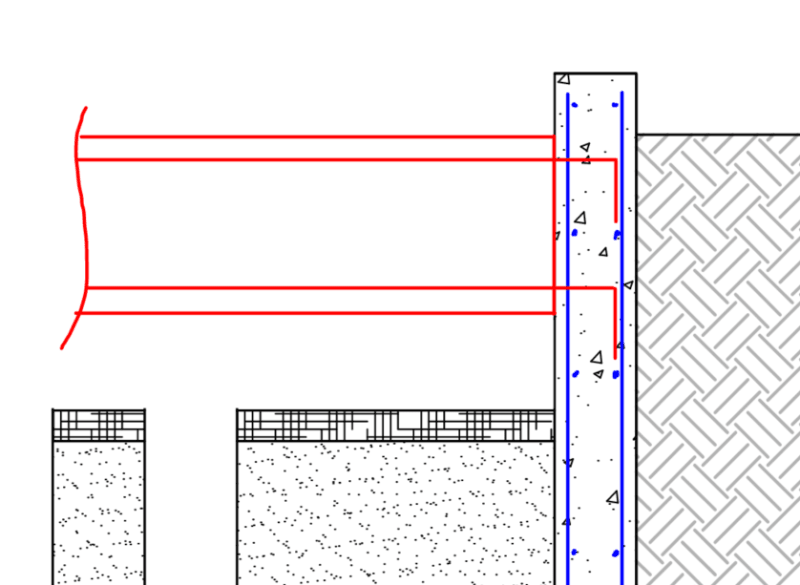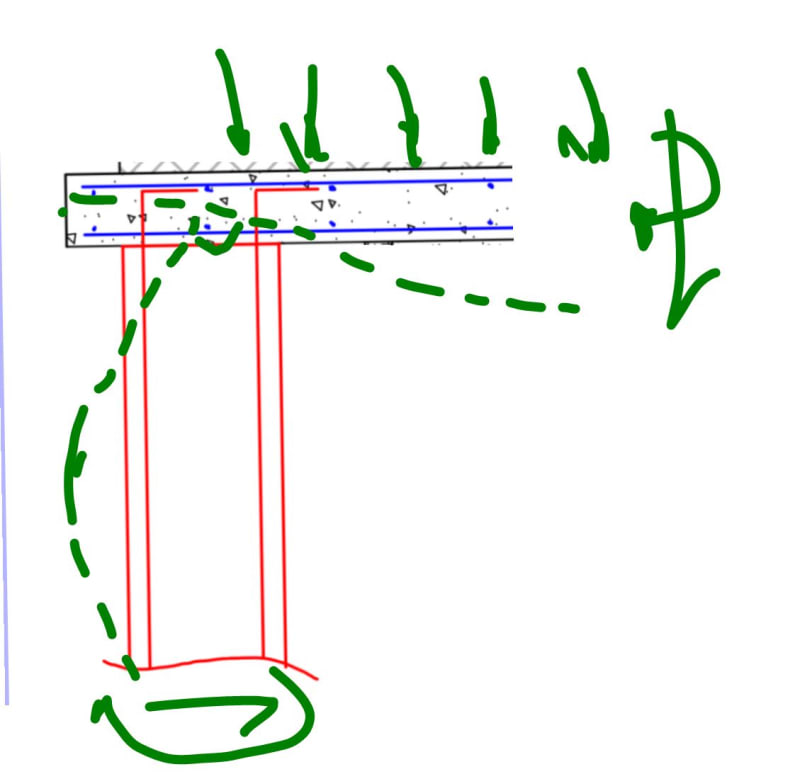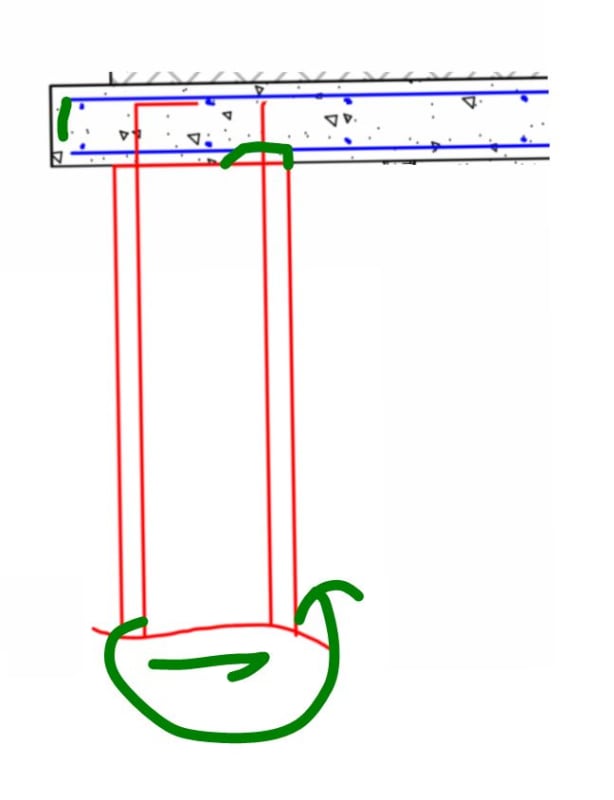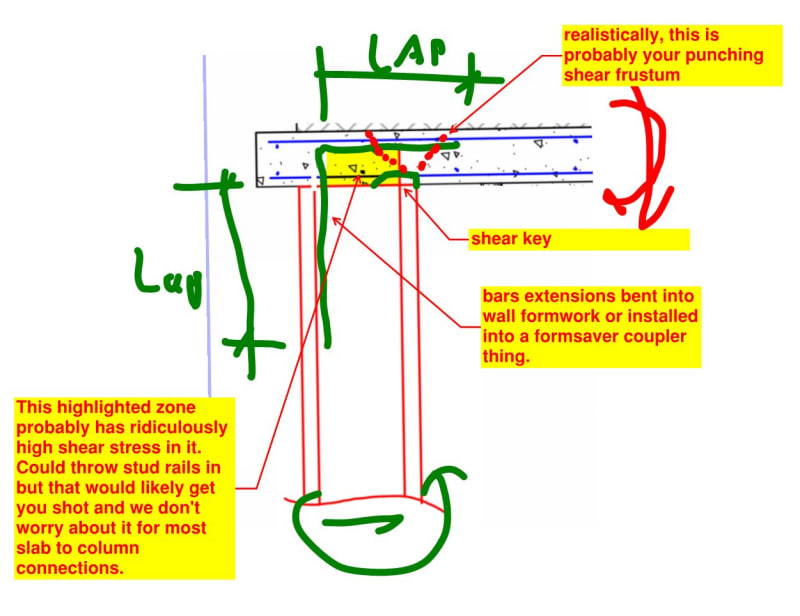Hello,
I have posted about this before, but had to make some design changes. I have a concrete strut (primarily an axial member and taking small flexural demand) which needs to be shifted up towards the top the wall it connects to. I have the following questions:
1. For this strut to behave as an idealized fixed-fixed member, don't I need the vertical bar in the wall to be developed above and below the strut? Below is not a problem, but I don't have a large distance of wall continuing above the strut.
2. If I end up just designing this strut as a pinned member, does that mean that I am essentially counting on the strut to crack at its ends? Intuitively, I don't see how this strut will be subjected to net tension due to the large compressive force it is taking.
3. Based on #2 above, if the section is in net compression, can the strut still behave as a pinned member even though the moment transfer into the wall is questionable?
Thanks for the help.

I have posted about this before, but had to make some design changes. I have a concrete strut (primarily an axial member and taking small flexural demand) which needs to be shifted up towards the top the wall it connects to. I have the following questions:
1. For this strut to behave as an idealized fixed-fixed member, don't I need the vertical bar in the wall to be developed above and below the strut? Below is not a problem, but I don't have a large distance of wall continuing above the strut.
2. If I end up just designing this strut as a pinned member, does that mean that I am essentially counting on the strut to crack at its ends? Intuitively, I don't see how this strut will be subjected to net tension due to the large compressive force it is taking.
3. Based on #2 above, if the section is in net compression, can the strut still behave as a pinned member even though the moment transfer into the wall is questionable?
Thanks for the help.




